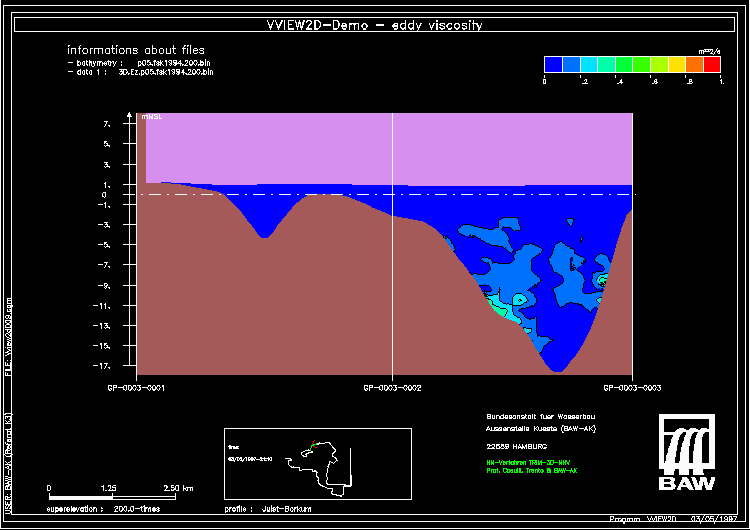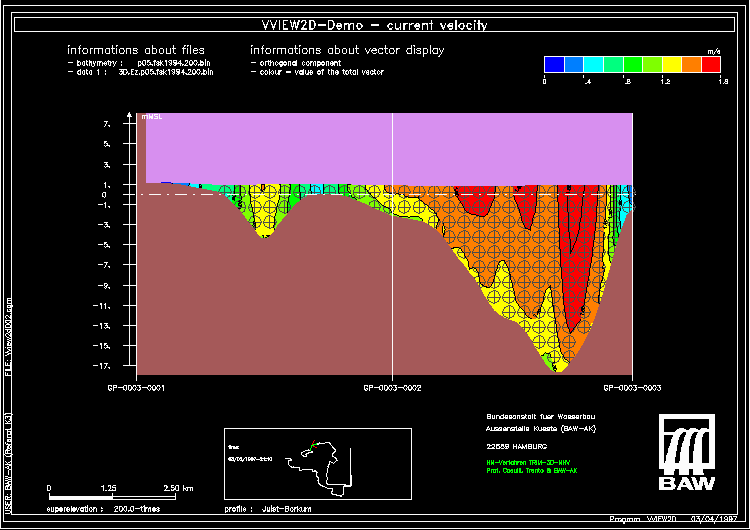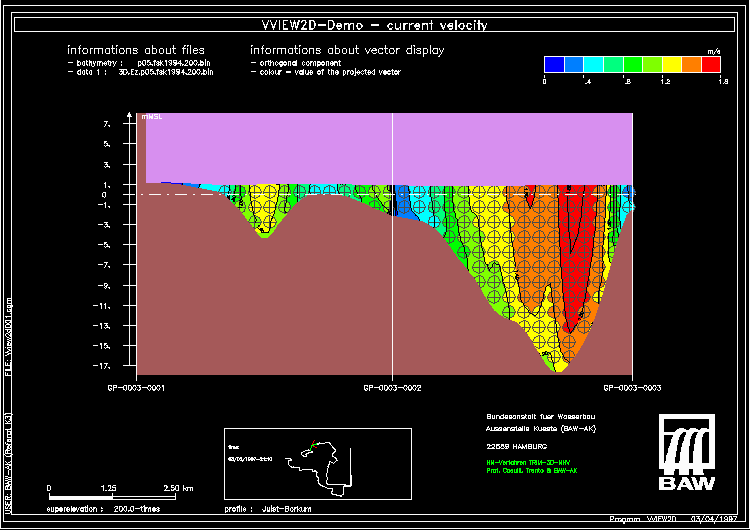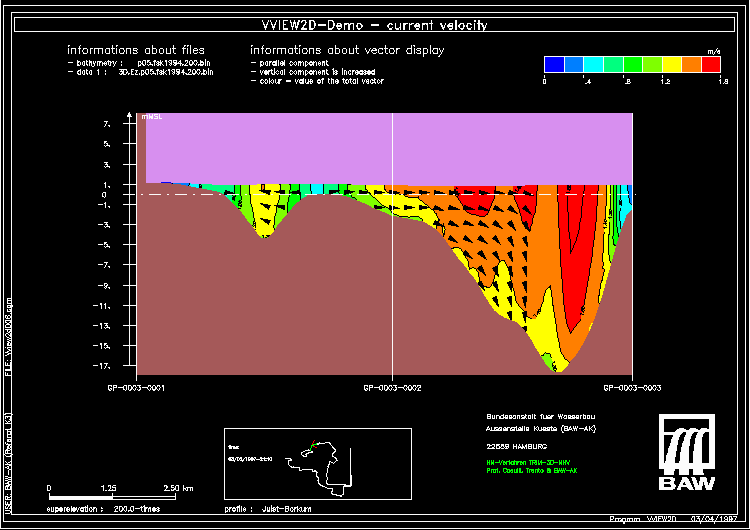VVIEW2D: Demo Examples: Coloured Isosurface Representation
From BAWiki
VVIEW2D Demo Examples: Coloured Isosurface Representation
In a coloured isosurface representation all data values defined at the nodal points of a scene are converted into a distinct colour in dependence of a colour scale. Normally the mean value at the nodes of a single polygon is used as the representative one for the whole polygon. Therefore the whole polygon is filled using a constant colour. If a vector quantity is displayed the colour for shading is representative for the value of the vector and an additional normalized lenght vector arrow or circle is superimposed which characterises the orientation of the parallel or orthogonal component of the vector. In addition the areas for heaven and hell are displayed using different uniform colours (here lilac and brown have been used).
The following demo examples are currently available for this type of graphical representation:
Eddy Viscosity
Example: eddy viscosity in a vertical section

Orthogonal Velocity 1
Example: orthogonal component of current velocity 1 in a vertical section (circles) with coloured isosurfaces (background) for the value of the current velocity. The current points from the observer into the vertical section. Compare with the same flow situation shown in figure orthogonal velocity 2.

Orthogonal Velocity 2
Example: orthogonal component of current velocity 1 in a vertical section (circles) with coloured isosurfaces (background) for the value of the orthogonal component of the current velocity. The current points from the observer into the vertical section. Compare with the same flow situation shown in figure orthogonal velocity 1.

Parallel Velocity 1
Example: parallel component of current velocity 1 in a vertical section (arrows) with coloured isosurfaces (background) for the value of the of the current velocity. Compare with the same flow situation shown in figure parallel velocity 2.

Parallel Velocity 2
Example: parallel component of current velocity 1 in a vertical section (arrows) with coloured isosurfaces (background) for the value of the orthogonal component of the current velocity. Compare with the same flow situation shown in figure parallel velocity 1.

